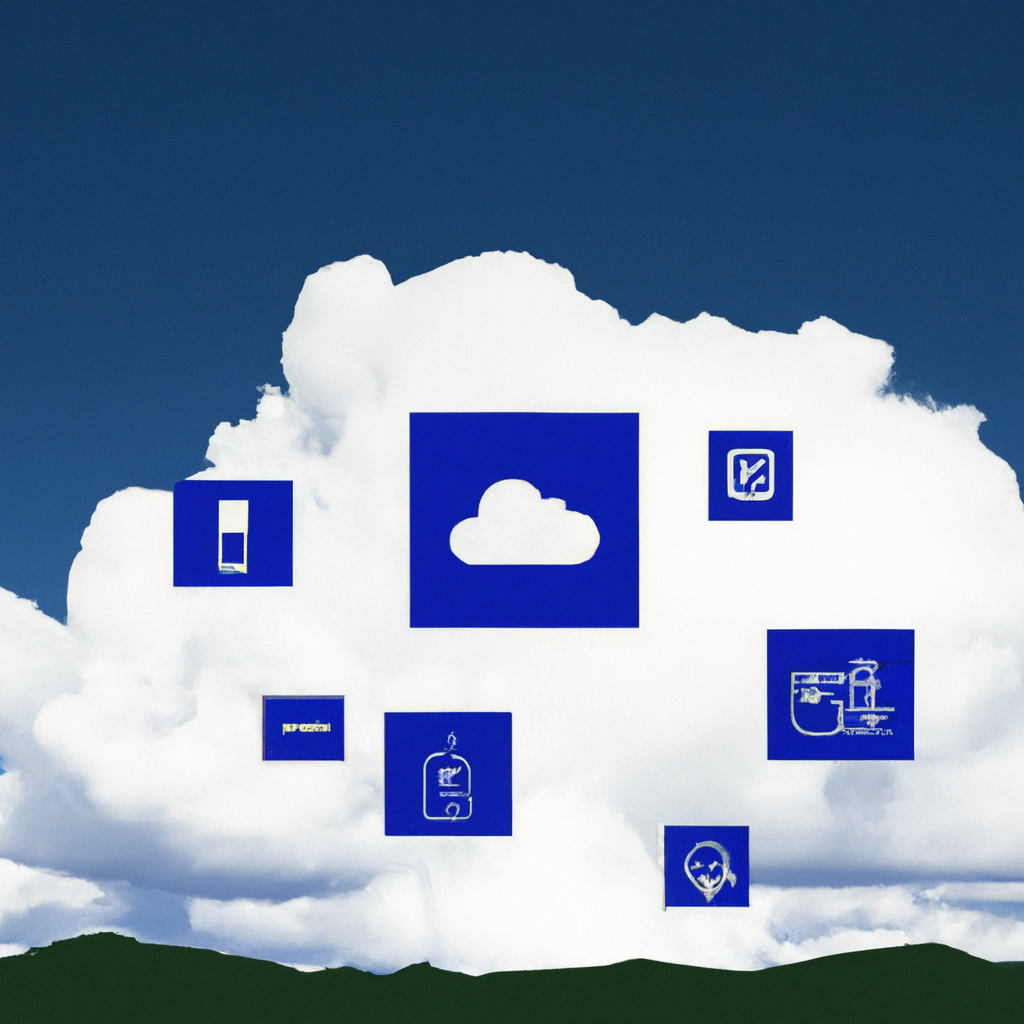Imagine being able to effortlessly build and host your own web apps with Azure App Service, a powerful tool that brings convenience and efficiency to the world of web development. With Azure App Service, you can effortlessly create, deploy, and manage your web applications, saving you time and energy. Whether you are a seasoned developer or just starting out, Azure App Service provides an intuitive platform that simplifies the web development process. Say goodbye to complicated and time-consuming setups, and say hello to an efficient and user-friendly solution that allows you to focus on what truly matters – creating amazing web apps.

Azure App Service
Overview and Features
Azure App Service is a fully managed platform for building, deploying, and scaling web apps. It provides a wide range of capabilities and features that allow developers to quickly and easily create powerful web applications. With Azure App Service, you can choose from various programming languages and frameworks, easily connect to databases, and scale your applications to meet the needs of your users. Whether you’re building a simple blog or a complex enterprise application, Azure App Service has everything you need.
Some of the key features of Azure App Service include:
- Support for multiple programming languages and frameworks, including .NET, Java, Node.js, Python, and PHP.
- Integrated tools and services for continuous integration and continuous deployment (CI/CD).
- Automatic scaling and load balancing to handle high traffic and demand.
- Built-in integration with Azure SQL Database, Azure Cosmos DB, and other popular database systems.
- Support for custom domains and SSL certificates for secure connections.
- Advanced monitoring and diagnostics capabilities to ensure optimal performance.
- Easy integration with other Azure services, such as Azure Functions and Logic Apps.
With these features, Azure App Service offers a comprehensive solution for building and hosting web apps, allowing developers to focus on their application logic without worrying about the underlying infrastructure.
Benefits of Using Azure App Service
Using Azure App Service offers several benefits for developers and organizations:
-
Ease of use: With Azure App Service, you can quickly spin up a new web app without having to worry about managing servers or infrastructure. The platform takes care of all the underlying management tasks, allowing you to focus on your application.
-
Scalability: Azure App Service makes it easy to scale your web apps to handle increased traffic and demand. You can scale up by increasing the resources allocated to your app, or scale out by running multiple instances of your app to distribute the load.
-
Flexibility: With support for multiple programming languages and frameworks, Azure App Service allows you to choose the tools and technologies that best fit your needs. Whether you’re a .NET developer or prefer working with Node.js, you can build your app using the languages and frameworks you’re familiar with.
-
Integration with other Azure services: Azure App Service seamlessly integrates with other Azure services, such as Azure SQL Database and Azure Functions, allowing you to build more powerful and complex applications. You can easily connect your app to a database or use serverless compute capabilities for executing code in response to events.
-
Monitoring and diagnostics: Azure App Service provides advanced monitoring and diagnostics capabilities, allowing you to easily track the performance and usage of your web apps. You can monitor metrics, view logs, and set up alerts to ensure your app is running smoothly.
Overall, Azure App Service provides a reliable and scalable platform for building and hosting web apps, offering a range of features and benefits that make it an ideal choice for developers and organizations.
Getting Started with Azure App Service
Creating an Azure Account
Before you can start using Azure App Service, you’ll need to create an Azure account. The process is simple and straightforward, and you can sign up for a free trial to try out the service. Once you have an account, you’ll have access to the Azure portal, where you can manage all your Azure resources.
Setting Up Azure App Service
Once you have an Azure account, you can set up Azure App Service by creating an App Service Plan and a Web App. An App Service Plan defines the resources allocated to your web app, such as the number of CPU cores and the amount of memory. A Web App represents your actual web application and is where you deploy your code.
To create an App Service Plan and a Web App, you can use the Azure portal or the Azure CLI. The portal provides a user-friendly interface where you can specify the desired configurations for your app. The Azure CLI, on the other hand, allows you to script and automate the deployment process.
Configuring App Service Plans and Web Apps
Once you have created your App Service Plan and Web App, you can configure them to meet your specific needs. You can choose the pricing tier for your App Service Plan, which determines the level of resources allocated to your app and the associated cost. Azure App Service offers a range of pricing options, from free tiers suitable for development and testing to high-performance, scalable tiers for production workloads.
For your Web App, you can configure various settings, such as the runtime stack (e.g., .NET, Node.js), the desired number of instances, and the deployment options. You can choose to deploy your app from a source control repository, such as GitHub or Azure DevOps, or use a container image from Azure Container Registry.
By configuring your App Service Plan and Web App, you can ensure that your web app has the necessary resources and meets your performance and scalability requirements.

Building Web Apps with Azure App Service
Selecting a Programming Language and Framework
With Azure App Service, you have the flexibility to choose the programming language and framework that best suits your needs. Whether you prefer working with .NET, Java, Node.js, Python, or PHP, Azure App Service supports multiple languages and frameworks.
When selecting a programming language and framework for your web app, consider factors such as your team’s expertise, the application requirements, and the ecosystem around the language. Azure App Service integrates well with popular frameworks, such as ASP.NET, Spring Boot, Express.js, Django, and Laravel, providing a seamless development experience.
Choosing and Configuring a Development Environment
Once you have selected a programming language and framework, you’ll need to set up your development environment. Azure App Service is compatible with popular development tools and IDEs, such as Visual Studio, Visual Studio Code, Eclipse, and IntelliJ IDEA.
To configure your development environment, you’ll need to install the necessary SDKs and tools for your chosen programming language and framework. Azure provides comprehensive documentation and guides for setting up the development environment, making it easy to get started.
In addition to the development tools, you’ll also need to install the Azure CLI or use the Azure portal to interact with Azure resources. The Azure CLI allows you to automate and script tasks, while the portal provides a user-friendly interface for managing your resources.
Creating and Deploying Your Web App
Once you have set up your development environment, you can start building your web app. Azure App Service supports various deployment options, allowing you to choose the method that best fits your workflow and requirements.
You can deploy your app directly from a local Git repository or a remote Git repository, such as GitHub or Azure Repos. This allows for easy and seamless integration with your development workflow, enabling continuous integration and deployment.
Alternatively, you can choose to deploy your app from a container image stored in Azure Container Registry. This option is useful if you have a complex application with multiple dependencies or if you prefer containerized deployments.
Once your app is deployed, you can use the Azure portal or the Azure CLI to manage and monitor your app. You can view real-time metrics, set up alerts, and debug any issues that may arise.
Building web apps with Azure App Service is a streamlined process that provides flexibility, ease of use, and seamless integration with popular development tools and frameworks.
Connecting and Integrating Data
Connecting Azure App Service to Databases
One of the key features of Azure App Service is its integration with popular database systems, such as Azure SQL Database, Azure Cosmos DB, MySQL, and PostgreSQL. This allows you to easily connect your web app to a database and store and retrieve data.
To connect your app to a database, you’ll need to configure the connection string in your app settings. The connection string contains the necessary information to establish a connection, such as the server name, the credentials, and the database name.
Azure App Service provides built-in support for retrieving the connection string from different sources, such as environment variables, application settings, or Key Vault. This allows you to securely store and manage your database credentials.
Once your app is connected to a database, you can use standard database APIs and libraries to interact with the database. You can perform CRUD operations, execute queries, and implement data access patterns suitable for your application.
Using Azure Functions and Logic Apps for Integration
In addition to connecting to databases, Azure App Service allows for easy integration with other Azure services, such as Azure Functions and Logic Apps. This enables you to build more complex and powerful applications that can respond to events and trigger actions.
Azure Functions is a serverless compute service that allows you to execute your code in response to events. You can create functions that run on a specific schedule, respond to HTTP requests, or react to changes in data. By combining Azure App Service with Azure Functions, you can build event-driven architectures and implement serverless workflows.
Logic Apps, on the other hand, provide a visual way to build and orchestrate business processes and workflows. You can define a series of steps and actions that should be taken in response to a specific trigger. By integrating Azure App Service with Logic Apps, you can automate business processes, integrate with external systems, and connect different services and APIs.
Together, Azure Functions and Logic Apps enable you to build highly integrated and scalable applications that can easily connect to external services, react to events, and automate business processes.

Scaling and Monitoring Your Web App
Scaling Up and Out
One of the advantages of using Azure App Service is its scalability capabilities. Azure App Service allows you to scale your web app both vertically (scaling up) and horizontally (scaling out).
Scaling up involves increasing the resources allocated to your app, such as the number of CPU cores, the amount of memory, and the size of the disk. This allows your app to handle increased traffic and demand, ensuring optimal performance. You can manually scale up your app by changing the configuration of your App Service Plan, or you can set up automatic scaling based on predefined rules and metrics.
Scaling out, on the other hand, involves running multiple instances of your app to distribute the load. This is especially useful when your app experiences high traffic or when you need to handle large workloads. Azure App Service provides built-in load balancing capabilities, allowing incoming requests to be distributed across multiple instances. You can easily configure the desired number of instances and set up automatic scaling based on metrics such as CPU usage or request throughput.
By scaling up and out, you can ensure that your web app is capable of handling increased traffic and workload, providing a smooth and responsive user experience.
Monitoring App Performance and Usage
To ensure optimal performance and availability of your web app, it’s important to monitor its performance and usage. Azure App Service provides a range of monitoring and diagnostics capabilities that allow you to track the performance and identify any issues.
You can monitor various metrics, such as CPU usage, memory usage, request count, and response time, to gain insights into the health and performance of your app. Azure App Service integrates with Azure Monitor, a powerful monitoring and alerting platform that provides real-time metrics and diagnostic logs.
In addition to metrics, you can also set up alerts to proactively notify you when specific conditions or thresholds are met. For example, you can set up an alert to notify you when the CPU usage exceeds a certain threshold or when the response time of your app goes above a specific value.
Azure App Service also provides advanced diagnostics capabilities, allowing you to collect and analyze logs and traces from your app. You can easily enable logging and configure the desired log level, and view the logs directly from the Azure portal or export them to other tools such as Azure Monitor Logs or Azure Storage.
By monitoring the performance and usage of your web app, you can identify any bottlenecks or issues and take proactive measures to optimize its performance and ensure its availability.
Managing and Securing Your Web App
Configuring Custom Domains and SSL Certificates
Azure App Service allows you to easily configure custom domains for your web app, providing a personalized and branded experience for your users. You can map your app to a custom domain, such as example.com, and Azure App Service will handle the necessary DNS configuration.
To configure a custom domain, you’ll need to add a CNAME or an A record to your domain’s DNS settings, pointing to the Azure App Service endpoint. Azure App Service provides detailed instructions and guidance on how to configure custom domains for different domain registrars.
In addition to custom domains, Azure App Service also supports SSL certificates for secure connections. You can either use a certificate provided by Azure (e.g., *.azurewebsites.net) or upload your own certificate. Azure App Service automatically handles the certificate renewal and installation process, ensuring secure and encrypted connections to your web app.
Implementing Authentication and Authorization
Securing your web app is essential to protect your users’ data and prevent unauthorized access. Azure App Service provides built-in authentication and authorization capabilities that allow you to easily implement secure access control for your app.
You can configure authentication options such as Azure Active Directory, social identity providers (e.g., Microsoft, Google, Facebook), or custom identity providers. Azure App Service integrates with Azure Active Directory, allowing you to authenticate users against your Azure AD tenant and enforce access policies based on user roles and permissions.
Once authentication is configured, you can implement authorization rules to control access to specific resources or endpoints in your app. Azure App Service supports role-based access control (RBAC) and attribute-based access control (ABAC), allowing you to define fine-grained access policies.
In addition to authentication and authorization, Azure App Service also provides various security features, such as DDoS protection, network isolation, and threat detection. These features help ensure the security and integrity of your web app and protect it from potential vulnerabilities and attacks.
Setting Up Continuous Deployment
Continuous deployment is a best practice for modern application development, enabling rapid and reliable deployment of new features and updates. Azure App Service provides integrated support for continuous integration and continuous deployment (CI/CD), allowing you to automate the build and deployment process for your web app.
Azure App Service integrates with popular version control systems, such as Git and Azure Repos, providing seamless integration with your existing workflow. You can configure your app to automatically deploy changes whenever a new commit is pushed to the repository, ensuring that your app is always up to date.
In addition to version control systems, Azure App Service also supports integration with build and release pipelines, such as Azure DevOps. You can define a series of build and release tasks that are executed whenever there is a new commit or a specific trigger is met. This allows for more advanced deployment scenarios, such as build validation, testing, and rollout strategies.
By setting up continuous deployment for your web app, you can streamline the deployment process, reduce the risk of errors, and ensure consistent and reliable deployments.

Troubleshooting and Support
Debugging Your Web App
When developing and maintaining a web app, it’s important to be able to debug and troubleshoot any issues that may arise. Azure App Service provides various tools and features that allow you to debug your app and identify the root cause of any problems.
One of the key debugging features of Azure App Service is the ability to enable remote debugging. This allows you to attach a debugger to your running app and step through the code to track down any issues. You can easily enable remote debugging from the Azure portal or using the Azure CLI.
In addition to remote debugging, Azure App Service also provides logging and diagnostic features that allow you to collect and analyze logs and traces from your app. You can enable logging for different components of your app, such as the web server, the runtime, or your application code. You can view the logs directly from the Azure portal, stream them to external tools, or export them for further analysis.
Furthermore, Azure App Service integrates with Azure Application Insights, a powerful application performance monitoring and diagnostics service. Application Insights provides real-time telemetry data and insights into your app’s performance, dependencies, and user behavior. You can use Application Insights to identify performance bottlenecks, diagnose errors, and optimize your app’s performance.
Accessing Azure App Service Support Resources
In case you encounter any issues or need assistance with Azure App Service, Microsoft provides comprehensive support resources to help you get back on track.
The Azure portal provides a rich set of documentation, tutorials, and how-to guides that cover various aspects of Azure App Service. You can access these resources directly from the portal, allowing you to quickly find answers to common questions or learn how to solve specific problems.
In addition to the portal, Microsoft offers dedicated Azure Support, which provides technical support and assistance for Azure services. Depending on your subscription, you can access different levels of support, including access to a support engineer, response time guarantees, and proactive monitoring and recommendations.
Microsoft also operates a vast community of developers and experts who actively contribute to the Azure ecosystem. You can find answers to your questions, share knowledge, and learn from others on platforms such as Stack Overflow, Microsoft Developer Forums, and GitHub.
By leveraging these support resources, you can effectively troubleshoot issues, optimize your app’s performance, and ensure the smooth operation of your web app.
Best Practices for Azure App Service
Optimizing Performance and Cost
To ensure optimal performance and cost efficiency of your web app, it’s important to follow best practices and optimize your deployment and configuration.
One best practice is to enable caching for static assets, such as images, stylesheets, and JavaScript files. Azure App Service provides built-in caching capabilities that allow you to cache content on the edge servers, reducing the load on your app and improving the response time for your users.
Another best practice is to enable compression for your web app’s content. You can enable compression at the application level, allowing the web server to compress the response before sending it to the client. This reduces the network bandwidth required and improves the overall performance of your app.
Additionally, it’s recommended to enable HTTP/2 for your web app. HTTP/2 is a modern version of the HTTP protocol that provides improved performance and efficiency compared to its predecessor. By enabling HTTP/2, your app can take advantage of features such as multiplexing, server push, and header compression.
In terms of cost optimization, it’s important to closely monitor the resources allocated to your app and scale them according to the demand. Azure App Service provides built-in scaling capabilities that allow you to scale up or scale out your app based on predefined rules and metrics.
You should also leverage Azure’s pricing tiers to choose the most cost-effective plan for your app. Azure App Service offers a range of pricing options, from free tiers suitable for development and testing to high-performance, scalable tiers for production workloads. By selecting the right pricing tier, you can optimize the cost of running your app while still meeting your performance requirements.
Implementing DevOps and CI/CD Pipeline
To enable a smooth and efficient development and deployment process, it’s recommended to implement DevOps practices and set up a continuous integration and continuous deployment (CI/CD) pipeline.
DevOps is a set of practices that combine software development (Dev) and IT operations (Ops) to enable collaboration, automation, and continuous delivery. By implementing DevOps practices, you can streamline the development process, reduce errors, and improve the overall quality and reliability of your app.
Setting up a CI/CD pipeline allows you to automate the build, testing, and deployment of your app, making it easy to deliver new features and updates to your users. Azure App Service integrates with popular CI/CD tools and services, such as Azure DevOps, GitHub Actions, and Jenkins, providing seamless integration with your existing workflows.
By implementing a CI/CD pipeline, you can achieve faster release cycles, ensure consistent and reliable deployments, and improve the overall productivity and efficiency of your development team.

Conclusion
Azure App Service is a powerful platform for building and hosting web apps, offering a wide range of features and capabilities that enable developers to quickly and easily create robust and scalable applications. With support for multiple programming languages, seamless integration with popular development tools and frameworks, and built-in features for scaling, monitoring, and security, Azure App Service provides a comprehensive solution for web app development.
By following best practices, implementing DevOps practices, and leveraging the powerful features of Azure App Service, you can build high-performance, reliable, and cost-effective web apps that meet the needs of your users. With the flexibility and scalability of Azure App Service, the future outlook for web app development on Azure is promising, offering developers the tools and technologies to deliver innovative and impactful applications.
